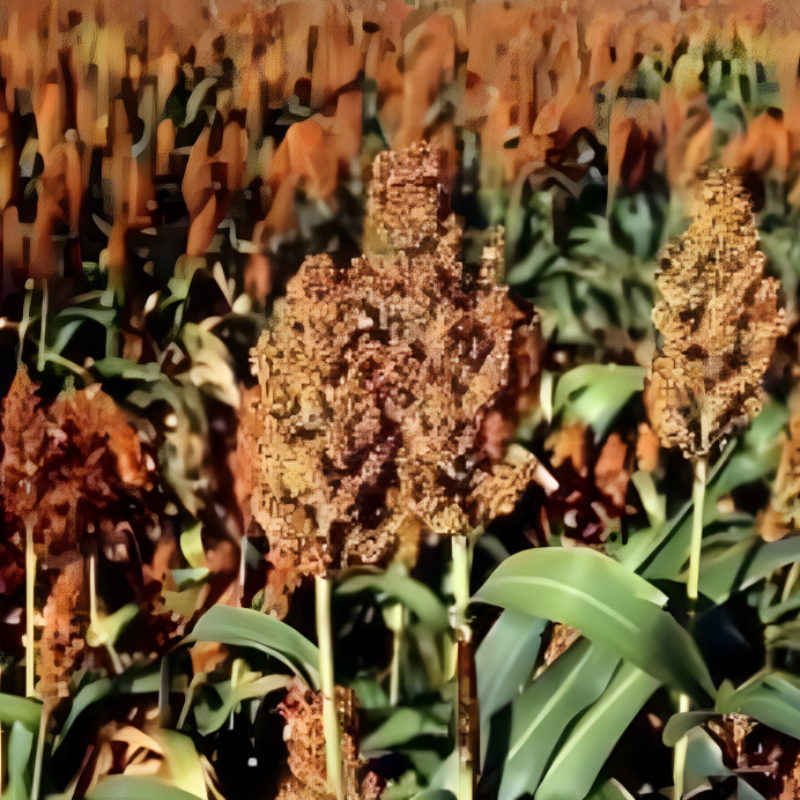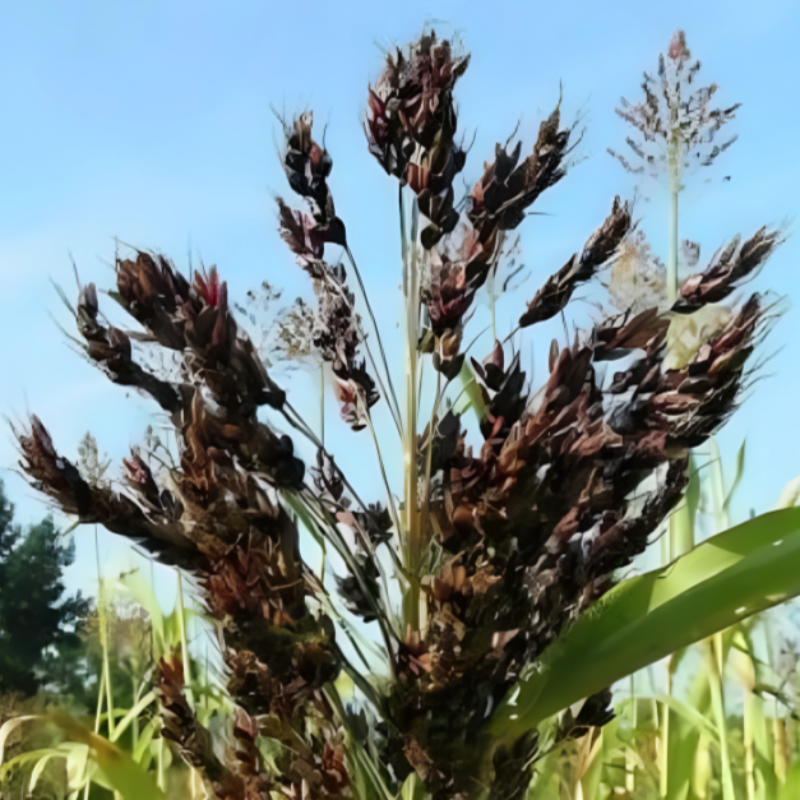- Historical context: Sorghum, also known as great millet, is a genus of flowering plants in the grass family Poaceae. It is one of the top five cereal crops in the world.
- Geographical origination: Sorghum originated in Africa, and from there it spread through the Middle East and Asia via ancient trade routes, travelling to the Arabian Peninsula, India and China along the Silk Road.
- Relevant cultural significance: Sorghum is a staple food in Africa and has been for centuries. It is traditionally eaten with sauces or meats.
- Time period of discovery: Sorghum was first domesticated in 5000 BC and has been cultivated in Egypt in antiquity; the largest producers of sorghum today are still in Africa.
- Original habitat: Sorghum is typically grown in warm regions, including tropical regions.
- Notable historical uses: Sorghum has been used for food, and to some extent forage, since antiquity. It is also used in making alcoholic beverages.
- Ideal temperature range: Sorghum prefers a temperature range of 25-34°C.
- Soil type: Sorghum grows best in neutral to slightly acidic soil (pH 6.0 to 7.0).
- Sunlight requirements: Sorghum needs full sun to grow properly.
- Watering needs: Sorghum is a drought-tolerant plant, but it does need water. Watering should be done 1-2 times a week.
- Planting season: The best time to plant sorghum is in late spring.
- Germination time: Sorghum seeds typically germinate in 10-14 days.
- Growth cycle duration: The growth cycle of sorghum is about 4 months.
- Common pests and diseases: Common pests include aphids and armyworms. Diseases include anthracnose, leaf blight, and smuts.
- Companion planting advice: Sorghum can be planted with legumes like peas and beans, which can help fix nitrogen in the soil.
- Common challenges and solutions: One common challenge is bird damage. This can be mitigated by using bird netting or scare devices.
- Nutritional values: Sorghum is high in fiber and protein, and is a good source of vitamins and minerals like B vitamins, magnesium, and iron.
- Health benefits: Sorghum may help control blood sugar levels, improve digestive health, and offer antioxidant effects.
- Culinary uses: Sorghum can be used in a variety of dishes, including breads, cakes, and soups. It can also be popped like popcorn.
- Medicinal uses: Sorghum has been used in traditional medicine to treat inflammation and other ailments.
- Other unique advantages: Sorghum is a versatile crop that can be used for food, feed, and bioenergy production.








